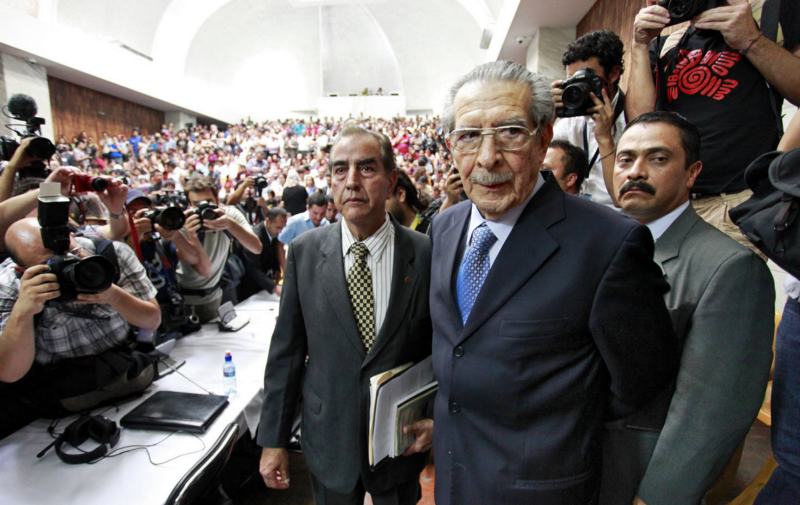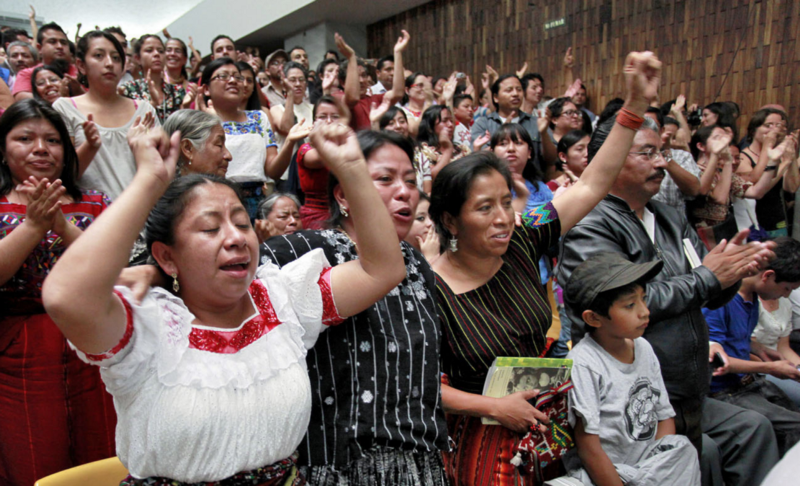Director Pamela Yates has spent decades chronicling the indigenous resistance in Guatemala. Her latest film, 500 Years: Life in Resistance, is the last in a trilogy that follows Mayan activists in their fight against a violent, oppressive regime. It’s currently showing in theaters across the country. Nexus Media interviewed Pamela Yates about her work and the first trial in the history of the Americas over the genocide of indigenous people. This interview has been edited for length and clarity
What inspired you to make the film 500 Years?
500 Years caps a trilogy of films I made about Guatemala, a country I went to at a young age to investigate the role the United States played in destroying democracy there in the 1950s and in assuring a legacy of brutal military dictatorships. That was my aim initially, but when I got there, my eyes were opened to what an incredible, beautiful, spiritual country Guatemala is, with its majority indigenous population. As I say in Granito [the second film in the trilogy], Guatemala wrapped its arms around my soul and never let me go.
Why did you choose the title 500 Years?
Well 500 years is a meme, very well known among indigenous people and Native Americans, for the moment when the European conquest of the Americas and the genocide of the indigenous people began. I begin with the first trial against the perpetrator of genocide against indigenous people ever in the world, certainly in the Americas, taking place in Guatemala. I thought that it would be a very good idea to somehow refer to the 500 years.
The first part of the film is the trial for genocide against General Efrain Rios Montt that began in 2013, and that was really the reason I went to Guatemala to start this film. I didn’t know it was a film. I wanted to document the trial, because it was such a historic moment that this small country in central America could take forward as a result of a 30-year quest for justice among the Mayans of Guatemala. But the trial was so dramatic, the way that it was changing Guatemalan’s relationship to the historical memory, that I decided to make the trial the beginning of a longer film.
At the trial, they used footage from one of your past films as evidence.
In 1982, I actually interviewed General Efrain Rios Montt, while he was president of Guatemala. I asked him a series of questions, and some of them he wasn’t answering, so I kept asking them, and eventually he admitted responsibility, saying, “If I don’t control the army, then what am I doing here?” This became key forensic evidence in the genocide trial against him, because during the trial he said, “I didn’t know what my officers and soldiers were doing,” but back in 1982, he said he was the commanding officer, the president and the commander-in-chief.

How did this trial impact the indigenous people of Guatemala?
It really widened the fight, and it really emboldened people as only a victory and a court case can do. Even though the verdict of guilty was vacated ten days after the sentenced was issued, for them, the fact that they sought justice, that their suffering in the genocide was acknowledged in this trial, and that Rios Montt was convicted and given a sentence of 80 years, that was justice. The quest for justice is justice as well. They have a saying in the highlands, “el veredicto está vigente” — the verdict stands.
Can you talk more about the cultural importance of the land for Mayans?
There’s always been this struggle for land because indigenous people were on the land, and they didn’t feel like they had to own the land. They wouldn’t say they were owners of the land, because they owned the land in community and collective. The indigenous people coming from the fertile coast were pushed into the mountains, and then in the mountains the discovery of hydroelectric power and minerals — all of a sudden, they were sitting on these valuable natural resources in Guatemala.
So, the government started to find ways to take their land away. They found ways during the war, and now they find ways using the law to sell licenses to multinational corporations working in tandem with Guatemalan corporations. [Indigenous people] have taken a series of measures to try to get the government to listen to them, and that is one of the things we show in 500 Years. It’s how the Mayans so creatively use resistance to defend their lands from the hydroelectric and mineral companies coming in and destroying the ecology of their homes.

Has there been progress?
Absolutely, they won some really important victories. And one the things that they’ve done, is they’ve gotten international allies, like Canada, to bring legal suits against the companies that are based in those countries. So, for example, Hudbay, which is a Canadian Corporation doing mining in the highlands of Guatemala is now being taken to court in Canada.
I would also say that there are a lot of really interesting leaders coming forward from environmental defenders, a lot of indigenous leaders. And one of the things that the government has done to try to stop them is to bring criminal charges against them, to criminalize their activity, to criminalize the activists. We’ve seen this in the United States with Standing Rock, it’s very wide spread in Guatemala.
The most important peasant leader in Guatemala, Daniel Pascual Hernandez, has been criminalized as well, and you meet him in the film and you see what a powerful leader he is. You see the trumped up charges being brought against him, because it’s a way of trying to take people out of the movement, out of social movements. It’s a way of trying to get them to defend themselves publicly and a way of trying to get them to spend money on their legal defense — money that they don’t have. So it’s a really insidious form of neutralizing activists.
What were your main challenges throughout the production process?
Sometimes being a documentary filmmaker, you have to be persistent. You have to be patient. You have to have really good sources. You have to talk to your sources all the time, and you have to find people amongst your sources who are going to tell the story the best. Who are the best storytellers? Who are real visionaries like Irma Alicia Velasquez Nimatuj, who can help us understand that this isn’t only a story about Guatemala, and this isn’t only a fight central to Guatemala. This is really a fight for the future of the planet. This is really a fight to have sustainable resources for the whole world.

What do you hope the people who watch 500 years take away from it?
I want them to know that social change is a lifetime commitment. If the Mayans from Guatemala can resist for 500 years, we can certainly resist for the durations of our lifetimes. I want them to know that change is possible and that we actually can win.
These are things that we should celebrate. These are things where Guatemala has led the way in their incredible justice initiative, and we should look at it closely, and we should honor it. And we should adapt some of their creative strategies as our own. Especially with the rise of a totalitarian government in our country and worldwide. It’s a moment to listen to the wisdom of the Mayans.
This interview was conducted by Mariana Surillo, who writes for Nexus Media, a syndicated newswire covering climate, energy, policy, art and culture.

